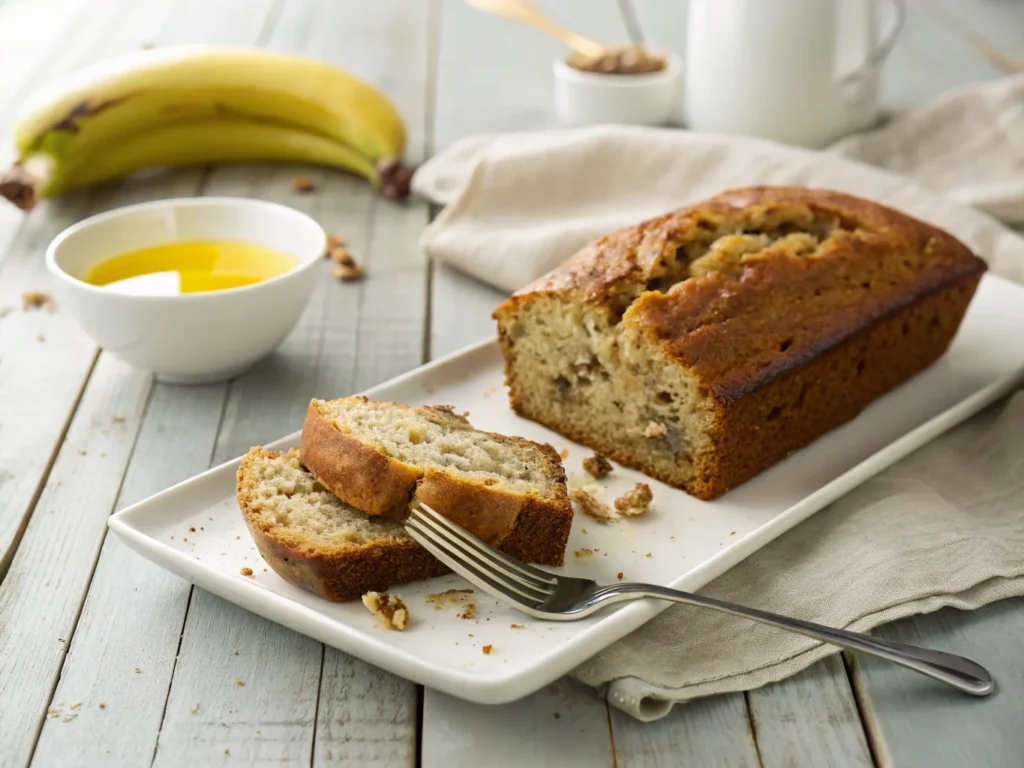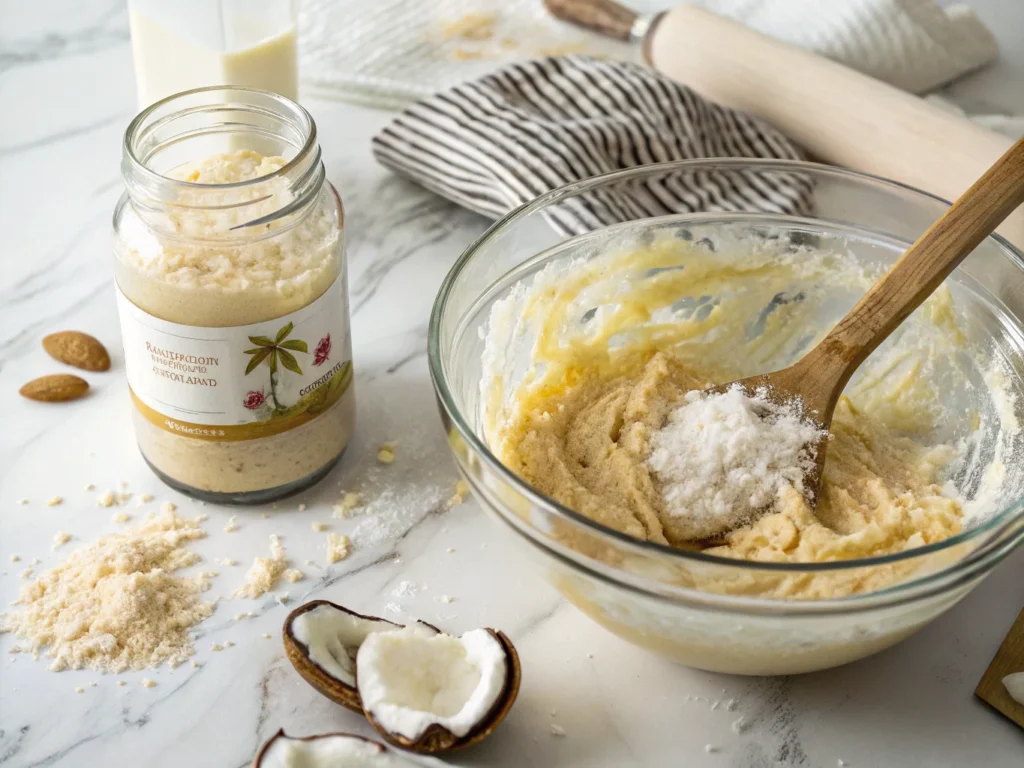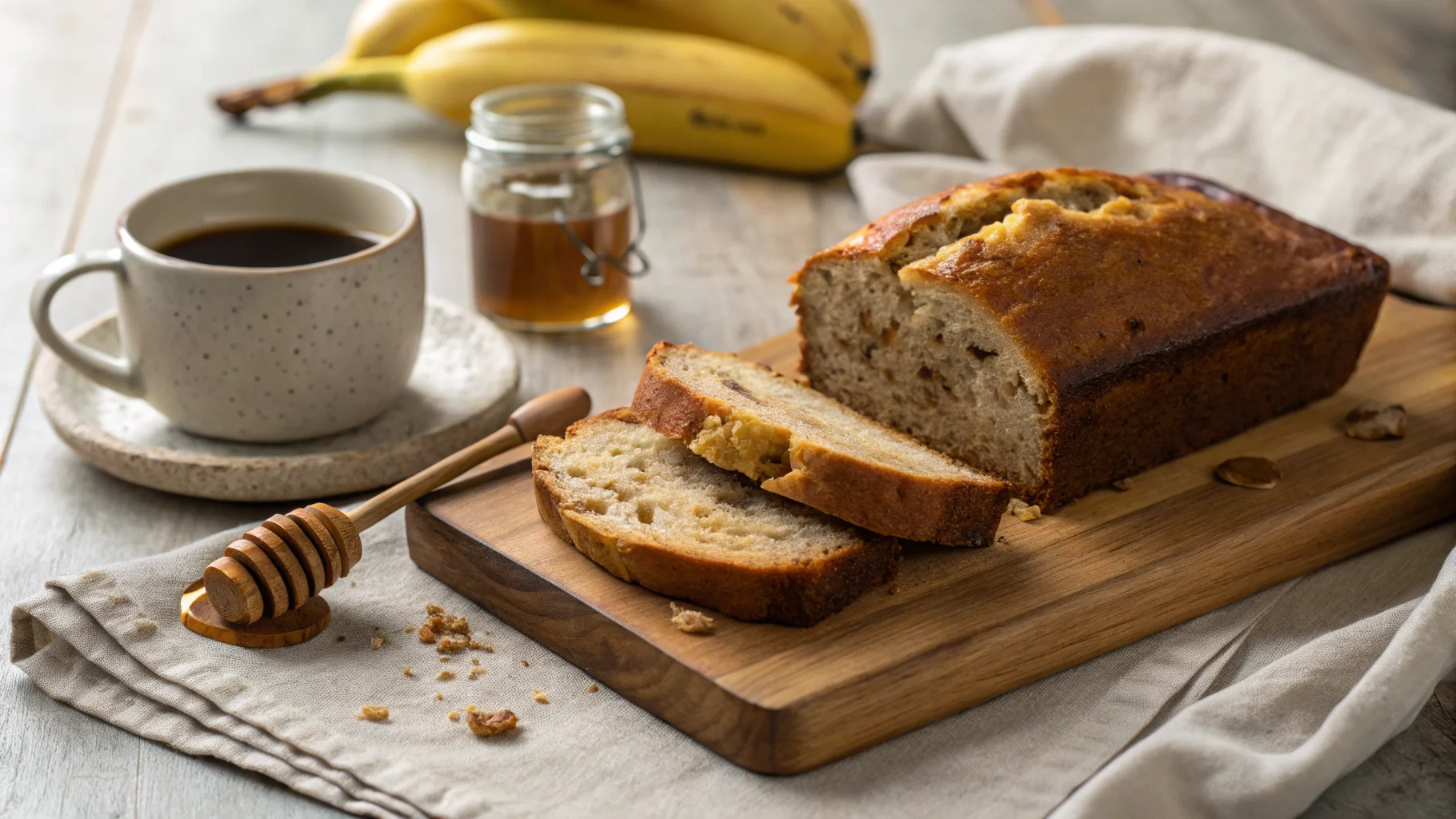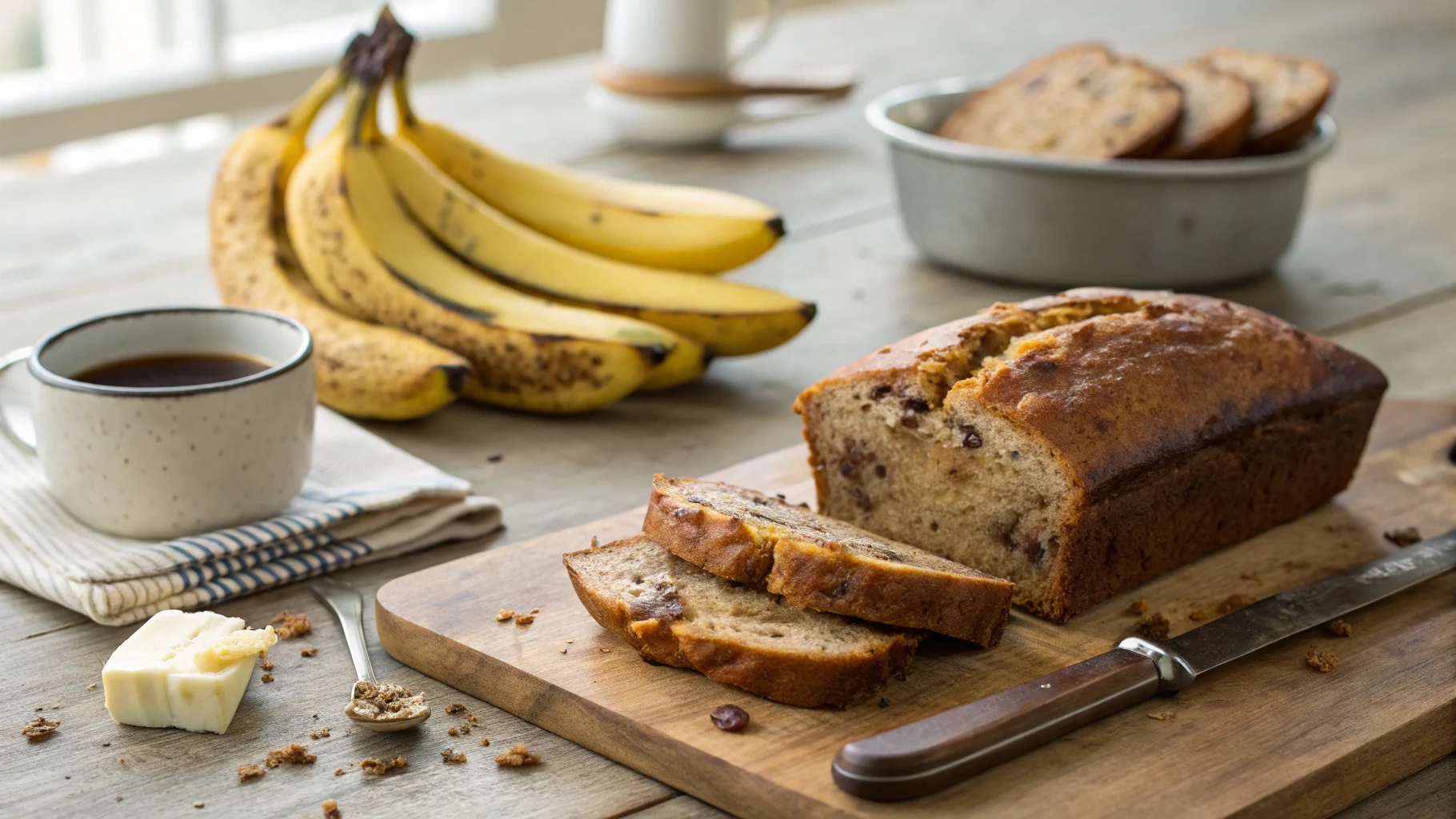Why the Right Oil Matters for Banana Bread
Banana bread is a household favorite, offering a perfect balance of sweetness and softness. Whether you bake it for breakfast, a snack, or dessert, getting the texture just right is essential. One of the biggest factors influencing the final result is the type of oil used. It affects not only the moisture and texture but also the flavor and nutritional value of the bread.
Many home bakers assume any oil will do, but that’s not the case. Some oils bring a neutral taste, letting the banana flavor shine, while others add distinct undertones that can enhance or overpower the bread. Because of this, choosing the best oil can feel confusing. So, what is the best oil to use when making banana bread? The answer depends on several factors, including the desired flavor, health considerations, and personal preference.
The Big Debate: Which Oil is Best for Banana Bread?
A common dilemma for bakers is whether to use neutral oils like vegetable or canola oil or opt for flavorful oils like olive or coconut oil. Each type has its pros and cons:
- Neutral oils (vegetable, canola, sunflower) keep the banana flavor pure while ensuring a soft, moist texture.
- Flavorful oils (olive, coconut, avocado) add complexity and richness but can alter the taste of the bread.
- Health-conscious options include oils rich in healthy fats, such as avocado oil, which offers nutritional benefits without affecting the texture.
Understanding how these oils work in baking helps make an informed decision. In this guide, we’ll break down their properties, discuss their impact on banana bread, and help you decide which oil suits your needs.
Why Neutral Oils Are a Safe Bet for Delicious Banana Bread
What Are Neutral Oils?
When baking banana bread, the type of oil used plays a crucial role in the final taste and texture. Neutral oils, such as canola oil, vegetable oil, and corn oil, are commonly used because they do not have a strong flavor. Unlike oils with a distinct taste, neutral oils blend seamlessly into the batter, allowing the banana flavor to take center stage.
Bakers prefer neutral oils for banana bread because they provide moisture without interfering with other ingredients. If you want the classic taste of bananas with a soft, tender crumb, these oils are an excellent choice. However, the decision goes beyond flavor alone. Many people wonder, what is the best oil to use when making banana bread? The answer depends on how the oil affects the texture, moisture, and nutritional value of the bread.
The Moisture Factor: How Neutral Oils Contribute to a Moist Texture
One of the biggest advantages of using neutral oils in banana bread is their ability to keep the loaf moist and soft. Unlike butter, which solidifies when cooled, oils remain in a liquid state at room temperature. This property helps create a tender texture that lasts longer, preventing the bread from becoming dry or crumbly.
Additionally, banana bread made with neutral oils has a consistent texture, ensuring every bite is just as soft as the first. Because oil evenly distributes throughout the batter, it prevents pockets of dryness, which can sometimes occur when using butter. This is especially important for those who prefer their banana bread to have a delicate, cake-like consistency.
If the goal is to make a banana bread that stays moist for days, using a neutral oil is a reliable way to achieve this. Still, choosing the right oil requires considering health factors as well.

Health Considerations
Although neutral oils are ideal for moisture and texture, it is important to consider their nutritional content. Some oils contain higher amounts of saturated fats or are heavily processed. When selecting an oil, reading labels and understanding the fat composition can make a difference in the overall healthiness of the banana bread.
Here are a few health factors to keep in mind:
- Canola oil – Low in saturated fat and high in omega-3 fatty acids, making it a heart-healthy choice.
- Vegetable oil – A blend of different oils, often including soybean or palm oil, which may contain more processed fats.
- Corn oil – Contains polyunsaturated fats, but it is also high in omega-6 fatty acids, which should be balanced with omega-3 intake.
For those who want a healthier alternative, it may be helpful to use a small amount of applesauce or Greek yogurt alongside neutral oil to reduce overall fat content while maintaining moisture.
Recipe Adaptations with Neutral Oils
One of the biggest benefits of using neutral oils in banana bread is their versatility. Since they do not introduce strong flavors, they allow for easy customization with mix-ins and flavor variations. Whether you enjoy adding chocolate chips, nuts, or spices to your banana bread, neutral oils provide the perfect base without overpowering additional ingredients.
When modifying a recipe, consider these adjustments:
- Chocolate chip banana bread – Using neutral oil ensures the chocolate flavor remains prominent.
- Nutty banana bread – Walnuts, pecans, or almonds pair well with neutral oils, allowing their rich flavors to shine.
- Spiced banana bread – Cinnamon, nutmeg, or allspice blend seamlessly without interference from oil flavors.
Ultimately, what is the best oil to use when making banana bread? If you want a classic, moist, and easily adaptable loaf, neutral oils like canola, vegetable, or corn oil are some of the best choices. Their ability to preserve moisture, blend well with flavors, and offer a smooth texture makes them a safe bet for any banana bread recipe.
Adding a Twist: How Flavorful Oils Can Elevate Your Banana Bread
Coconut Oil: A Tropical Delight
For those who want to add a slight twist to traditional banana bread, coconut oil is a fantastic option. This oil provides a rich, buttery crumb that enhances the texture and gives the bread a more indulgent feel. Because coconut oil is solid at room temperature, it creates a denser structure while keeping the bread moist.
One thing to consider is the flavor. Unrefined coconut oil has a distinct coconut taste, which pairs beautifully with banana, chocolate, or nuts. However, if you prefer a more neutral taste, refined coconut oil is a great alternative since it has little to no coconut flavor.
If you are wondering, what is the best oil to use when making banana bread? Coconut oil is ideal if you enjoy a hint of sweetness and a slight tropical touch. However, it is higher in saturated fats compared to other oils, so it may not be the best choice for those looking for a heart-healthy option.

Olive Oil: A Healthy and Flavorful Option
Olive oil is another excellent alternative that enhances banana bread with its smooth texture and health benefits. Unlike neutral oils, olive oil has a slightly fruity, peppery taste, which can complement the natural sweetness of bananas. In particular, extra-virgin olive oil contributes to an ultra-moist banana bread while also providing healthy monounsaturated fats.
That being said, its strong flavor may not suit everyone. To keep the banana flavor at the forefront, many bakers prefer using light or extra-light olive oil, which has a milder taste. These versions still provide the benefits of olive oil without overpowering the bread.
If you are trying to determine what is the best oil to use when making banana bread?, olive oil is a great option for those who want a slightly richer, more complex taste while maintaining a soft, tender crumb.
Other Flavorful Oils
Beyond coconut and olive oil, other flavorful oils can work well in banana bread, depending on personal preference and health goals. Here are a few additional choices:
- Avocado Oil – A mild, buttery oil that adds moisture while being rich in healthy fats.
- Sesame Oil – Though uncommon in banana bread, toasted sesame oil can add a deep, nutty aroma.
- Nut Oils (e.g., walnut oil, almond oil) – These oils bring a subtle nuttiness that pairs well with banana bread containing chopped nuts.
Each of these oils influences the texture and taste differently, so experimenting with small batches can help determine which one suits your ideal banana bread recipe. If the goal is to maintain a neutral flavor, then avocado oil is a great alternative, while nut oils can enhance an already nutty banana bread.
Recipe Considerations: Tips for Baking with Flavorful Oils
When using flavorful oils in banana bread, it is important to balance their taste with other ingredients. Some oils, such as extra-virgin olive oil or toasted sesame oil, can be quite strong, so using them in moderation can help prevent overpowering the banana’s natural sweetness.
Here are some useful tips:
- Pair ingredients wisely – Coconut oil works well with tropical flavors like pineapple or shredded coconut, while olive oil pairs beautifully with honey or cinnamon.
- Use high-quality oils – Since flavorful oils have distinct tastes, using cold-pressed or extra-virgin varieties can enhance the depth of flavor without tasting artificial.
- Mix oils if needed – If an oil is too strong, blending it with a neutral oil can create balance.
If you are still wondering, what is the best oil to use when making banana bread? The answer depends on whether you prefer a classic taste or want to introduce subtle, complex flavors. Those looking for a healthier option may enjoy olive or avocado oil, while coconut oil is perfect for adding richness. Ultimately, experimenting with different oils can lead to a deliciously unique loaf.
Common Mistakes and How to Avoid Them
Even with the right ingredients, banana bread can turn out dry, greasy, or lacking in flavor. Many issues stem from improper oil selection or storage. If you are wondering, what is the best oil to use when making banana bread?, knowing how to avoid these common mistakes can help ensure the perfect loaf.
Using Old or Rancid Oil
One of the biggest mistakes in baking is using old or rancid oil. Over time, oils break down and develop off flavors that can make banana bread taste stale or bitter. Even if the oil looks fine, it may have already lost its freshness.
To keep oils in their best condition:
- Store them in tightly sealed containers to prevent oxidation.
- Keep them in a cool, dark place away from direct sunlight.
- Use oils within their recommended shelf life, typically 6–12 months for most cooking oils.
If the oil smells sour or tastes strange, it is best to replace it. A fresh oil will enhance the bread’s texture without affecting its flavor.
Adjusting Oil Quantity
Oil affects the moisture and density of banana bread, so using the right amount is crucial. Too much oil can make the bread greasy, while too little can leave it dry.
A standard recipe calls for about ½ cup of oil per 2–3 bananas, but adjustments may be needed based on desired texture:
- For extra moisture – Add 1–2 extra tablespoons of oil or mix in yogurt or applesauce.
- For a lighter texture – Reduce the oil by 2–3 tablespoons and replace it with milk or mashed bananas.
- For a denser loaf – Stick to the recommended oil quantity but bake at a slightly lower temperature.
If you are still asking, what is the best oil to use when making banana bread?, consider testing different amounts to achieve the perfect balance of moisture and density.
The Role of Ripe Bananas
Even the best oil cannot compensate for unripe bananas. Using bananas that are underripe results in a bland, dry loaf. The key to naturally sweet, flavorful banana bread is choosing overripe bananas with dark brown spots.
Here’s why ripe bananas matter:
- They contain more natural sugars, enhancing the bread’s sweetness.
- Their soft texture makes them easier to mash, ensuring a smooth batter.
- They retain moisture, working alongside oil to keep the bread soft and tender.
If bananas are not ripe enough, speed up the process by baking them in a 300°F oven for 10–15 minutes until the skins darken
Conclusion
Choosing the right oil for banana bread depends on personal preference, texture goals, and health considerations. Neutral oils like canola or vegetable oil provide classic moisture, while flavorful oils like coconut or olive oil introduce unique tastes.
To avoid common mistakes:
- Always use fresh oil to prevent off flavors.
- Adjust the oil quantity to achieve the perfect balance of moisture and texture.
- Use ripe bananas to enhance the bread’s natural sweetness.
Ultimately, what is the best oil to use when making banana bread? The best oil is the one that complements your desired flavor, moisture level, and nutritional needs. Try different oils to find your favorite, and enjoy baking banana bread that turns out perfectly every time.
Frequently Asked Questions About Oils in Banana Bread
What oil is best for homemade bread?
The best oil depends on the flavor and texture you want. If you prefer a neutral taste, canola or vegetable oil is ideal. However, if you want to enhance the flavor, olive oil or coconut oil can add depth.
What can I substitute for vegetable oil in banana bread?
There are several great substitutes, including:
- Applesauce – Reduces fat while keeping the bread moist.
- Greek yogurt – Adds protein and a slight tang.
- Mashed bananas – Enhances sweetness and softness.
These options work well if you want a healthier banana bread without compromising texture.
Do you use olive oil or vegetable oil for bread?
Both work, but it depends on the flavor profile you want. Vegetable oil is neutral and does not alter the taste of banana bread. Olive oil, especially extra-virgin, adds a fruity and slightly peppery note, which some people enjoy.
Is butter or oil better for banana bread?
Each has advantages:
- Oil makes the bread softer and keeps it moist for longer.
- Butter adds a rich flavor but can make the bread slightly denser.
Many bakers use half butter, half oil to get the best of both worlds. If you are still wondering, what is the best oil to use when making banana bread?, it comes down to whether you prioritize moisture or flavor.




